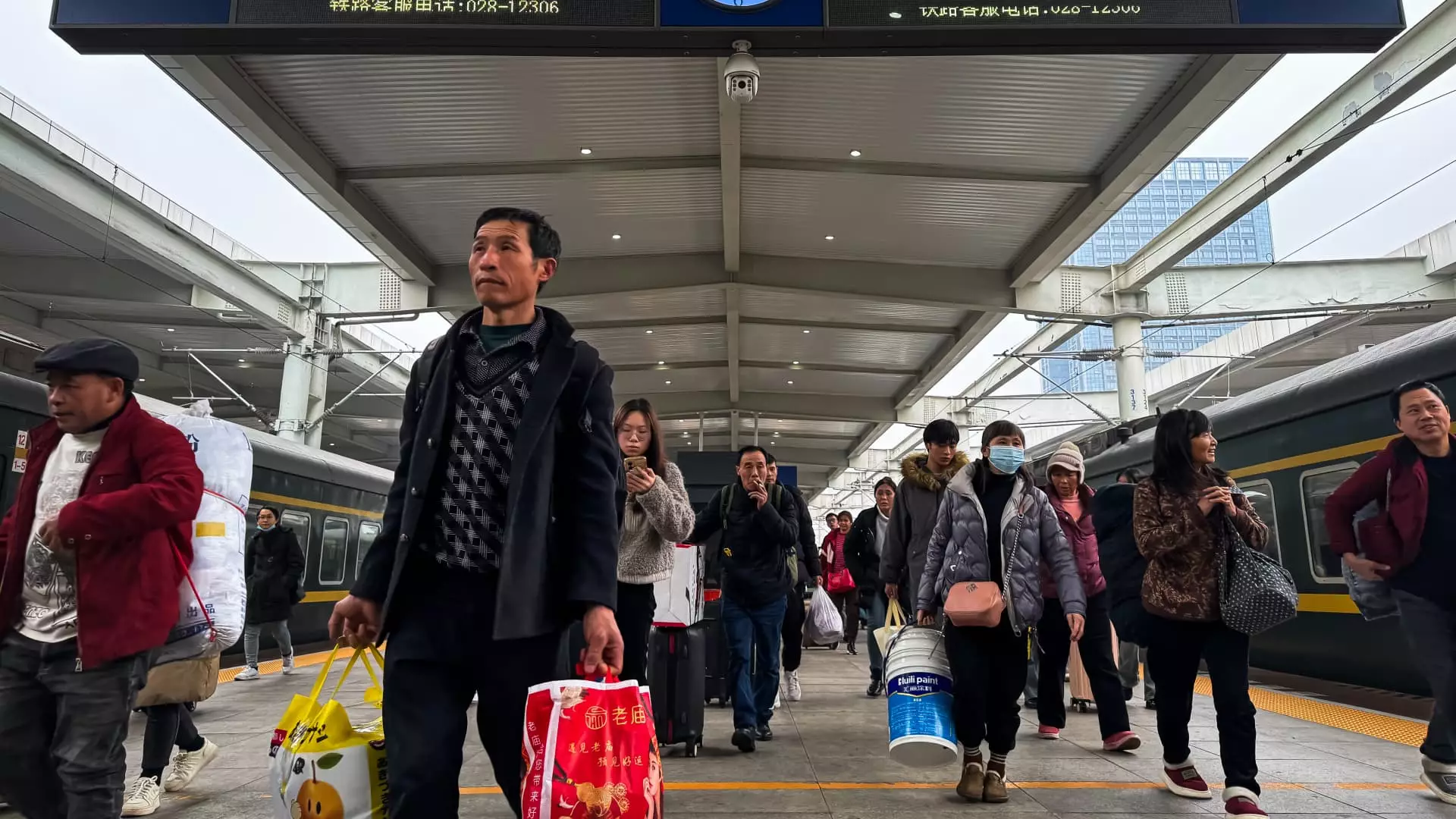China’s economy now faces significant hurdles as the anticipated stimulus measures have yet to manifest in a meaningful way. Despite government pledges to stimulate growth, investors are becoming increasingly anxious, waiting for evidence of recovery in domestic demand and consumer confidence. With official GDP projections on the horizon for 2024, market analysts are exercising caution, noting that the measures taken thus far seem inadequate to address persistent economic headwinds. As economic structural flaws remain evident, the resilience of China’s growth model is under scrutiny.
Recent measures—such as interest rate reductions and an array of stimulus initiatives—have been introduced as a response. However, concrete details regarding substantial fiscal support are largely postponed until the annual parliamentary session in March. This timeframe raises questions about the immediacy and effectiveness of these interventions. Investment firms such as BlackRock have taken a tempered stance, acknowledging their cautious optimism towards Chinese stocks while voicing concerns about underlying structural challenges that complicate long-term forecasts.
A particularly troublesome indicator within China’s economy is domestic consumption, which has seen a notable decline. Consumer prices are projected to rise by a mere 0.5% in 2024, which marks the lowest rate of inflation in a decade. Such stagnation in consumer spending is not only detrimental but raises alarm bells regarding the overall health of the economy. The city of Beijing aims for a modest 2% inflation target for 2025, closely monitoring conditions that could impede growth.
Yin Yong, the mayor of Beijing, has highlighted key challenges including weak consumer spending, declining foreign investment, and pressure on various industries. While recent fiscal initiatives intend to prop up technology development and stimulate consumption, the anticipated effects may take time to become apparent. Analysts from property consultancies like JLL warn that the commercial property market remains under pressure, and rental prices for high-end office spaces are expected to continue their downward spiral.
The complexities surrounding China’s real estate market cannot be overlooked, as it previously constituted a significant portion of economic activity. Following stringent regulations aimed at curtailing developers’ excessive debt, the sector has struggled, impacting related industries such as construction. The government’s renewed focus on real estate is seen as an effort to mitigate this trend, with recent policies introduced to sustain construction and support developers facing financial difficulties.
Even with a 40% spike in new home sales in major cities, concerns persist. Experts like Jeremy Zook from Fitch Ratings express skepticism regarding the sustained recovery of the real estate market. Property inventories in less affluent cities underscore the fragility of this rebound, suggesting that the sector’s challenges are far from over.
Potential Futures: Trade-In Subsidies and Local Investments
In a bid to encourage consumer spending, the Chinese government has rolled out trade-in subsidy programs intended to rejuvenate specific sectors, such as tech and appliances. Although these initiatives demonstrate a tactical approach to stimulate consumption, experts remain divided on their long-term impact. Analysts predict that excitement surrounding these subsidies may wear off, particularly if ongoing economic constraints limit households’ willingness to spend.
Moreover, the emphasis on boosting domestic consumption casts light on China’s broader strategy to pivot away from reliance on real estate and external markets. In a notable shift, authorities are pushing for enhanced security and localization within strategic sectors, influencing European businesses operating in China. This dual-focus on national security and development aligns with current global dynamics where tensions with the U.S. are rising, highlighting China’s intent to fortify its ground amid geopolitical pressures.
As China progresses through 2024, the effectiveness of stimulus measures and consumer incentives will be paramount in determining the course of the economy. While the government endeavors to engineer a recovery, the intricate dance of addressing structural issues and revitalizing consumer confidence must take center stage. Analysts’ predictions paint a mixed picture, suggesting that while short-term boosts in investment and spending are possible, systemic issues may hinder substantial progress.
China’s journey towards economic recovery is fraught with complexities. The success of forthcoming policies and their capacity to build a resilient economy will ultimately dictate whether China can sustain its growth ambitions in the face of domestic challenges and an evolving global environment.

